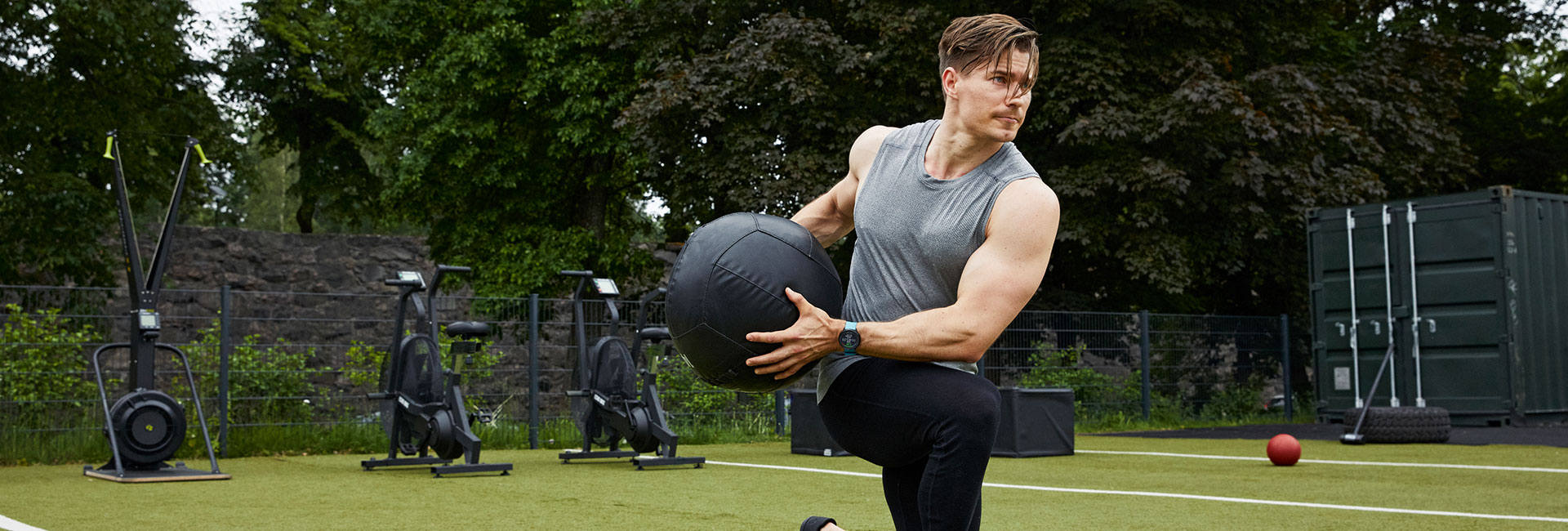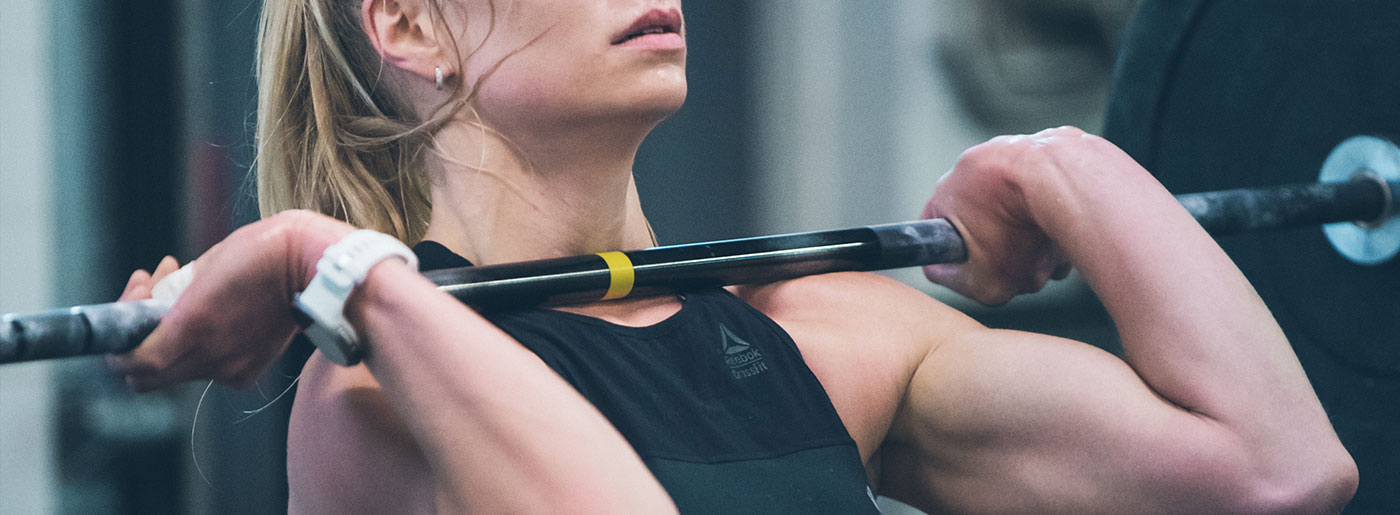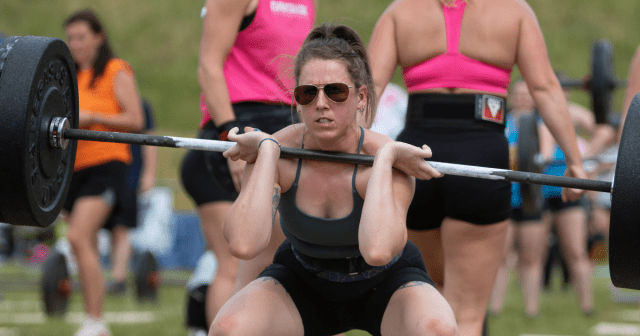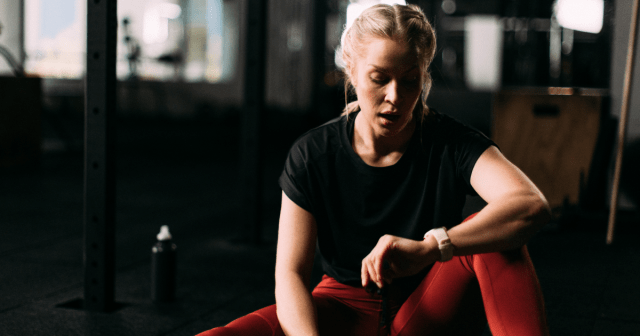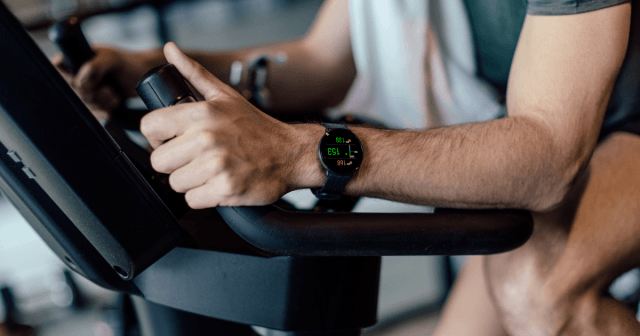When it comes to a warm-up before lifting, which routine best describes you?
- A few light sets of the first exercise
- A quick jog on the treadmill
- A handful of stretches to ‘loosen up’
These are random examples, but you get the idea – warming up before lifting weights is both varied and more often than not, unspecific to the workout.
Now, you may be thinking ‘who cares’? Warming up is just the fluff before the real work, right?
Well, what if I were to tell you that warming up before lifting can be the defining factor between crushing your workout and simply going through the motions?
Here’s why.
Why warming up before lifting matters
When you enter the gym, your body is not prepared for exercise. Walk from your office straight to the squat rack and you can be sure of the following:
- Stiff hips that refuse to descend even close to parallel.
- Lack of muscular tension.
- Poor coordination.
- Weights will feel crazy heavy.
But, if you spent just 10 minutes oiling up the joints and firing up key muscles, those squats would be a different story. They would look better, feel better and you would be sure to lift heavier loads.
When your warm-up before lifting is done right, you’ll:
- Unlock mobility
- Improve body control
- Ignite more powerful muscle contractions.
And that’s going to transfer to a better workout.
It helps to think of the warm-up as ‘movement preparation’. That is what you’re doing. You’ll prepare your body for the movements you’ve planned. It’ll get your body into an optimal physical state. It’ll be primed and ready to crush the workout and avoid potential injury.
But how to go about it?
The 5-Step Warm-up before lifting
This warm-up sequence includes 4 (or 5) steps and takes around 10 minutes to perform.
Step 1: Light Aerobic Work
Light aerobic work increases the heart rate and raises core temperature. Warm muscles are more supple. So you are less likely to pick up soft tissue injury. And you’ll respond better to the dynamic stretching in step 3.
How It’s Done
3-5 minutes of cardio activity, preferably repetitive in nature: jog on a treadmill, elliptical, bike, rower, skipping…whichever you prefer. If you run or cycle to the gym and are already ‘warm’, feel free to skip this step.
Step 2: Soft Tissue Release (Optional)
This step is my no means mandatory but if you have tight muscles and struggle with mobility, soft tissue release can help. It’s a very effective method to reduce muscle tension. This can immediately improve range of motion. It also prepares muscles for stretching.
How it’s done
The foam roller is a great tool. But to release more precise areas of tension, it’s worth getting your hands on a tennis ball or something similar. This will fit the contours of your body better.
Pick 1-2 body parts and apply release techniques for 60-90 seconds per body part.
3 quick tips to foam roll more effectively
- Go very slow.
- Go against the grain of the muscles not just up and down.
- Hold static pressure on those exquisitely tender areas.
For best results, focus on muscles that tend to be short and tight. The main culprits across the anatomy are:
- Lower Body
- Hip Flexors
- Adductors
- Lateral Hip Group
- Upper Body
- Pectoralis Group
- Lats
Step 3: Dynamic Stretching
Before diving in, a quick word on static stretching (when you hold a stretch in a set position for a set amount of time). Here’s what we actually know: static stretching for less than 30 seconds has no negative impact on performance – but it doesn’t improve performance either.
Static stretching for more than 60 seconds does negatively impact performance (namely, it reduces power output). Given that it ‘may’ negatively impact performance and definitely does not improve performance, static stretching has no place in a warm-up (Kay & Blazevich, MSSE, 2012).
Dynamic stretching on the other hand does improve performance. It gives you greater power output (Behm & Chaouachi, EJAP, 2011). It also does a great job to unlock mobility as it reduces tension in the surrounding soft tissues.
How It’s Done
Pick 3-5 movements and perform 10 reps of each. Focus on the joints that are key players in the exercises you have planned.
As a general guideline, here are 3 dynamic stretches for the lower and upper body that pretty much everyone can benefit from:
Lower Body
Adductors
Hip Flexor
90/90
Upper Body
Pecs
Lats
T Spine
Step 4: Joint Preparation
CARs (controlled articular rotations) are a mobility exercise that involve isolating a joint and actively moving it through its full range of motion.
This is going to engage all the surrounding muscles as they work together to coordinate the motion – great for enhancing motor control. This action is also going to siphon blood to the joint and stimulate the release of synovial fluid. All in all, this promotes smooth, efficient, and coordinated motion.
How it’s done
Upper body day? Perform shoulder CARs. 2 Reps.
Lower body day? Perform hip CARs. 2 Reps.
Step 5: Targeted Muscle Activation
The purpose of this phase is to fire up key stabilizing muscles. Examples are the rotator cuff in the shoulder for the upper body and the gluteal group (the butt in other words) for the lower body.
How It’s Done
The activation drills you pick should match up with the main lift you have that day. They should target the key stabilisers and/or prime movers.
Pick 1-2 exercises and perform 2 sets of 8-15 reps with a 30-45 second rest between sets. (Pick a rep count that works the muscles but don’t go to failure.)
This will clean up energy leaks, improve movement quality and increase strength.
For example, before squatting, you can perform one move for the stabilisers (such as x-band walks for the hip abductors) and one for a prime mover (such as glute bridges for the gluteus maximus).
There are many exercise options and to choose from. So it’s best to experiment and be keenly aware of how your main lift feels afterwards. Everyone will respond differently.
Whichever you choose, be a stickler for pristine form and focus your mind on the muscles being targeted. Yes, that mind-muscle connection matters if you want a strong transfer your lifts!
Here are two of my favorite activation drills, one for the lower body and one for the upper:
Facepulls
Foam Roller Glute Bridges
Wrapping up the warm-up
To show you just how simple all the warming up before lifting is in practice, here’s a sample routine before a squat focussed lower body session:
If you liked this post, don’t forget to share so that others can find it, too.
Or give it a thumbs up!
I like this article
Please note that the information provided in the Polar Blog articles cannot replace individual advice from health professionals. Please consult your physician before starting a new fitness program.
